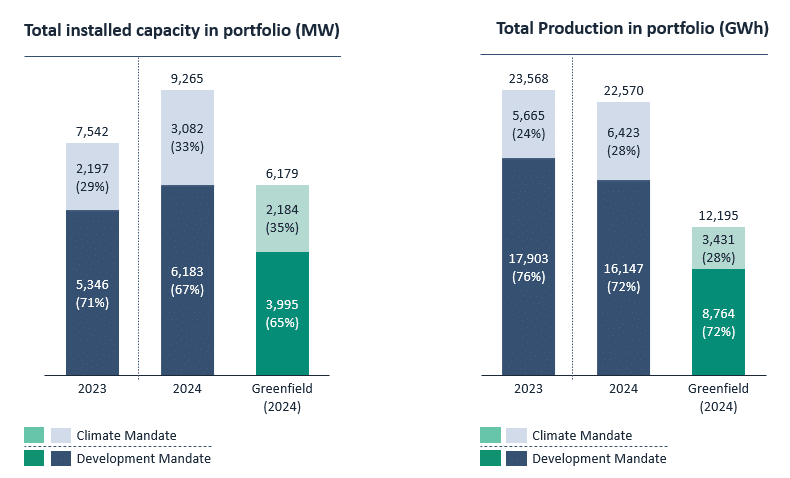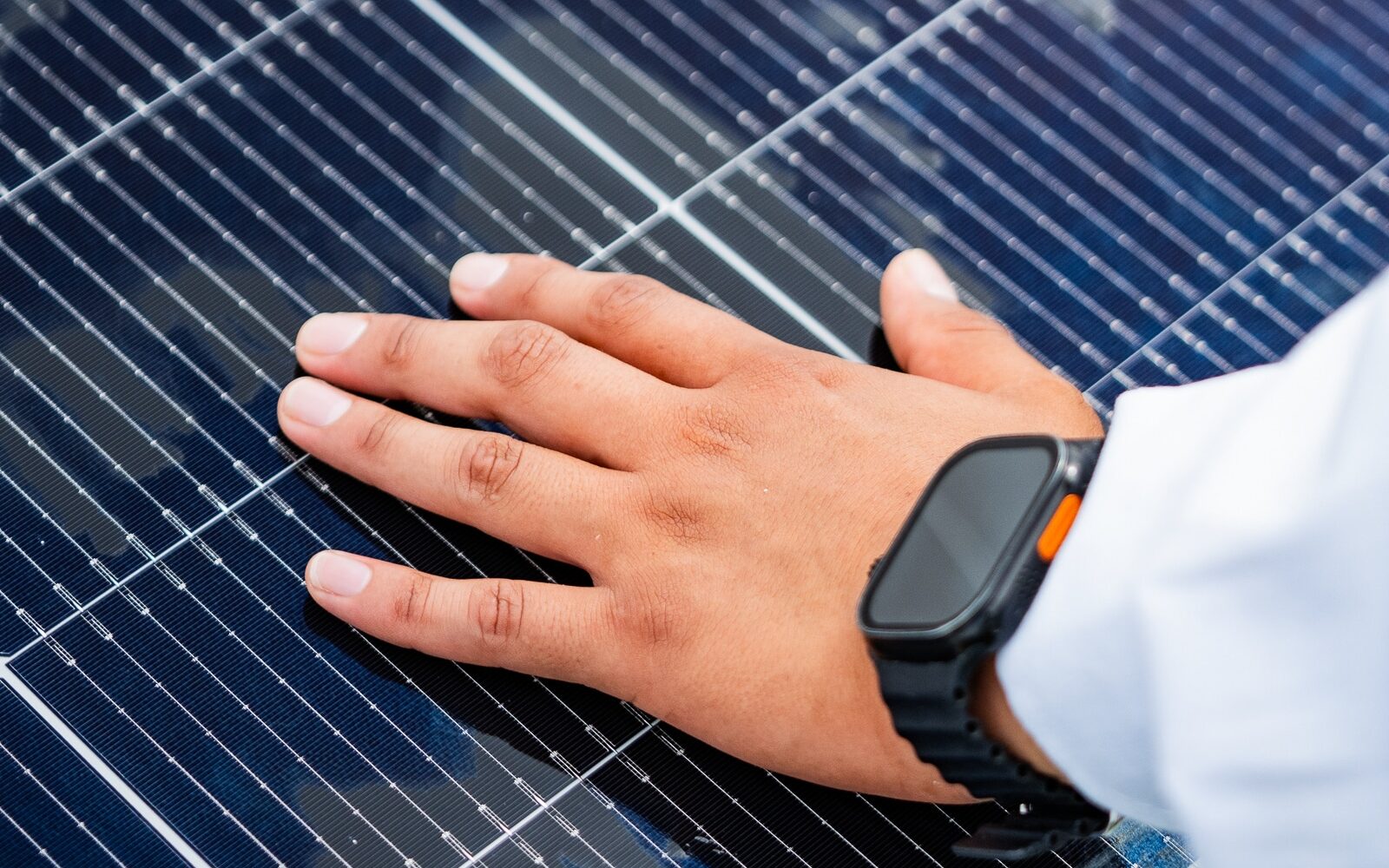Access to energy is a fundamental prerequisite for economic growth, job opportunities, and enhanced living standards in developing countries. Furthermore, transitioning to a renewable energy system is essential for combating the climate crisis and ensuring a more sustainable future.
Norfund contributes to this by investing in renewable energy generation, transmission and off grid solution providers in emerging markets.
Impact 2024
New households
granted access to electricity via micro/minigrids or solar home systems
Electricity produced
by portfolio companies in 2024
New capacity
total new renewable capacity financed
Impact objectives
Norfund invests in renewable energy and access to energy under two different mandates, namely the development mandate and the climate mandate. The investments under the development mandate primarily seeks to reduce poverty and spur economic growth through increased provision of energy and access to energy. Investments under the climate mandate primarily seeks to contribute to the transition to net zero by increasing access to renewable energy in emerging markets and thereby reducing emissions. Therefore, investments made under the two mandates have different impact objectives. Fulfilment of these objectives leads to job creation and economic growth, while mitigating climate change.

Results 2024
Increased energy supply
In 2024, Norfund helped finance the construction of 3 315 MW of new electricity generation capacity (greenfield*), including on-grid independent power producer (IPP) projects and commercial & industrial (C&I) projects.
By the end of 2024, the total capacity in Norfund’s portfolio was 14 461 MW, of which 9 265 MW was installed and 5 195 MW under construction. Of total capacity, 10 559 MW is greenfield.
In 2024, the power plants in our portfolio produced 22.6 TWh. Of this, 12.2 TWh was produced by power plants where Norfund has helped finance the construction (greenfield). This is equivalent to the combined annual electricity consumption of Tanzania and Uganda.
Transmission and energy storage projects are essential for a well-functioning energy system. In 2024, this sector continued to attract investment, with three new investments in transmission companies.
Greenfield refers to the capacity Norfund has helped finance the construction of. Hence, it excludes the capacity already installed in the portfolio companies at the time of the investment.

Adding to the already installed capacity, there was 5 195 MW capacity under construction in the portfolio in 2024. In addition to the 17.8 TWh in renewable energy generation, Norfund’s portfolio companies produced 4.8 TWh non-renewable energy in 2024.

Increased share of energy from renewable sources
All new capacity financed by Norfund is renewable, but Norfund still has investments in non-renewable energy capacity in the portfolio from previous investments. In 2023, the combined installed renewable energy under construction was 83% of the total, while in 2024 it increased to 89%.
The share of total energy production that was renewable also increased from 75% to 79%, contributing to an increase in actual avoided emissions from 8.4 million tons of CO2e in 2023, to 9.2 million tons of CO2 in 2024.
Increased access to energy
Not all households have the means or desire to connect to the electricity grid. For these households, mini-grid solutions and solar home systems serve as essential alternatives, delivering reliable electricity without the need for grid infrastructure. In 2024, 750,000 households gained access to electricity through these solutions.
Additionally, 1.3 million smaller solar-powered products, such as lanterns, were sold to households over the same period.
Norfund’s investee companies also played a crucial role in expanding electricity access for businesses, providing solar-powered solutions, including lanterns and solar home systems tailored for both residential and commercial use.